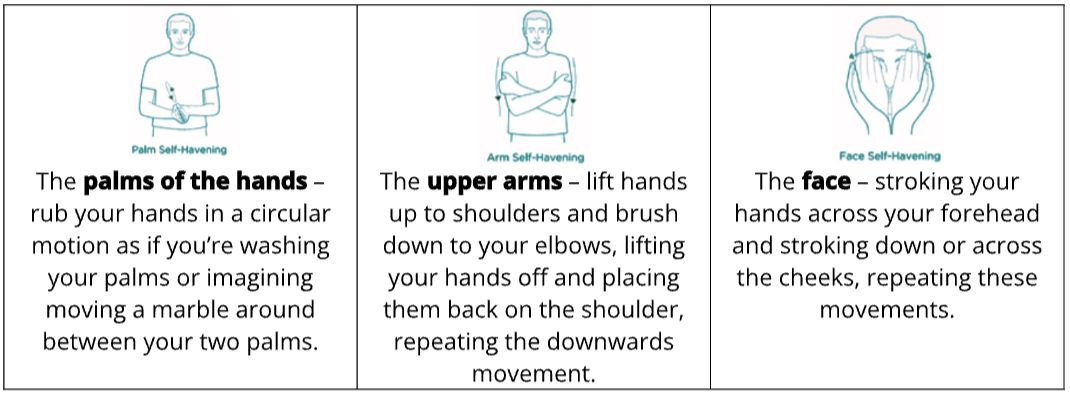How Havening Techniques® can help you
It’s natural for us to worry or stress about things, in fact we have an inbuilt “negativity bias” in our brain that has us do this! This negativity bias is part of a system, trying to protect us from threats – it has a good intention. The challenge is that often the threats aren’t real “life and death” situations, but this ancient part of our brain can react like they are and trigger our fight/flight response!

Anxious feelings occur when we start thinking about future situations and anticipating that something bad will happen or go wrong. Stress occurs when we perceive that we don’t have the resources or capacity to cope with the situation that we’re dealing with or facing. Both stress and anxiety can trigger our fight/flight response, making us feel like our rational brain has been hijacked and in those times it’s hard to get perspective, think logically or problem-solve.
Understanding your triggers & signs and symptoms

The first step to interrupting and managing these reactions is to notice your triggers e.g. certain people, certain situations like an important presentation coming up, a deadline, running late, an anniversary of a distressing event etc. The next step is to notice your particular signs and symptoms e.g. rapid breathing, churning tummy, lack of sleep, headaches, skin rashes, intolerance etc.
Once you bring awareness to your triggers and your signs and symptoms you can take back control of your reactions.
Havening Techniques®
Havening Techniques® are a powerful and simple set of techniques, based on neuroscience, that can quickly take you out of the fight-flight reaction. You can apply self-havening for emotion regulation and general wellbeing or see a Certified Practitioner for specific issues/goals.
Havening uses soothing touch, in a way that sends messages to your brain to calm down and feel safe. We’ve all experienced the power of soothing touch to help us feel calm – when a loved one gives us a hug or holds our hand, or a good friend touches our arm to connect. Havening uses a certain type of touch that activates specific receptors in the skin triggering the release of helpful, calming neurochemicals, such as serotonin, oxytocin and GABBA, putting you back in control.
Using the 3 Havening Touches™ for self-havening
These are the three Havening touches:

Touch should be at a moderate pace (not too fast or slow) and a pressure that feels soothing. Use a combination of the touches, or just one that you prefer, for 1-5 minutes or more if needed, to feel calm.
The palm self-havening touch is easy to do in front of others – it’s a natural movement that doesn’t draw attention. So, if you’re in a stressful meeting or conversation or giving a presentation you can easily move into Palm Havening without worrying what people will be thinking.
Simple self-havening Techniques®
You can also combine the Havening Touches® with deep breathing from your diaphragm e.g. box breathing, counter breathing etc; or saying a calming mantra to yourself e.g. “I’m calm, in control, relaxed” or “I’m safe, I’m ok – right here, right now” or something else that resonates with how you want to be feeling.
More information

Michelle is a Certified Havening Techniques® Practitioner and one of three Registered Trainers in New Zealand. If you’d like to find out how Havening could help with ongoing or chronic anxiety, stress or trauma or you’d like to learn Havening Techniques as a Practitioner book a no-obligation discovery call with Michelle.
Book a call to find out about Havening
Havening Techniques® is a registered trademark of Dr Ronald Ruden, 15 East 91st Street, New York. www.havening.org